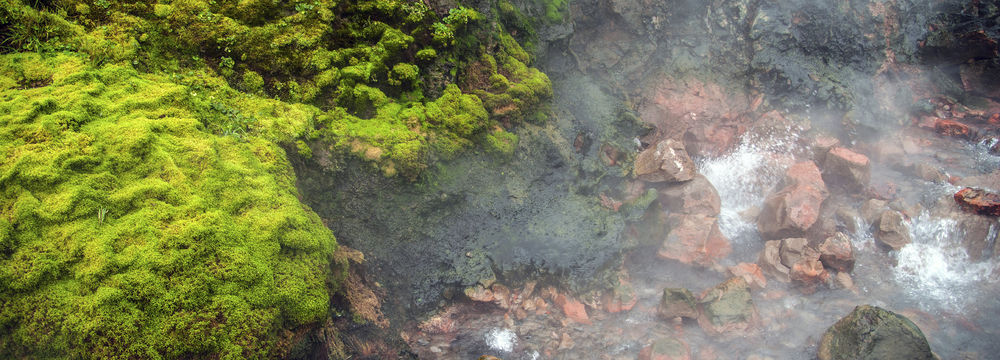Geothermal Energy
Geothermal energy is a renewable, clean and cost effective alternative to conventional fuels for heat and power generation. The source of the geothermal energy is the Earth's internal heat.
Geothermal energy is a renewable, clean and cost effective alternative to conventional fuels for heat and power generation. The source of the geothermal energy is the Earth's internal heat. Its constant reproduction of heat is caused by radioactive decay of minerals such as uranium, thorium and potassium in the Earth's crust and mantle. It emerges on the Earth's surface as flow of hot water and steam, naturally in hot springs and geysers or through man-made boreholes. According to the World Energy Assessment (2000), geothermal energy has the highest potential of technically harnessable renewables, estimated to be up to 5.000 EJ/year, compared to 1.575EJ/year for solar- and 540EJ/year for wind energy.

Geothermal energy can be used directly for heating and cooling purposes as well as power production. There are countless opportunities for using direct heat (20°C-150°C) originated from geothermal energy, such as heating homes, offices, and greenhouses; in aquaculture and food processing plants; and a variety of other applications. Iceland is well known to be a world leader in the use of geothermal district heating. After the Second World War, Orkustofnun carried out research and development, which has led to the use of geothermal resources for heating of households. Today, almost 90% of Iceland's houses and buildings are heated by natural hot water.
Geothermal Energy in Europe
There is a huge potential in Europe for direct use of geothermal energy, especially low enthalpy ones. According to data presented, by John W. Lund, at World Geothermal Congress 2010, Europe is the world leader in geothermal direct use. Geothermal energy is directly used in 32 European countries, accounting for over 40% of world's direct utilisation.
In addition to the low enthalpy potential several locations also contain high-temperature areas with steam fields where an underground temperature reaches 250°C within 1,000 m depth. These areas are often directly linked to the active volcanic systems. The rocks are geologically very young and permeable. As a result of the topography and high bedrock permeability, the groundwater table in the high-temperature areas is generally deep, and surface manifestations are largely steam vents. Hydrogen sulphide present in the steam tends to be oxidised at the surface by atmospheric oxygen, either into elemental sulphur, which is deposited around the vents, or into sulphuric acid, which leads to acid waters altering the soil and bedrock.
Temperatures in active, high-temperature systems generally follow the boiling point curve. The highest recorded downhole temperature is 386°C. Hydrological considerations and permeability data imply that the groundwater in the reservoir is undergoing a density driven vertical circulation. This groundwater is in most cases of meteoric origin. However, in some areas it is partly or solely ocean water.
These conditions of high temperature fields make them highly suitable for power generation. In Europe today, geothermal energy is only used to produce 1,5 GW of electricity, mainly in Iceland and Italy. However, it is estimated that it is possible to utilize geothermal energy in Europe to the equivalent of 80-100 GWe. The Opportunities are plentiful but the objective of the International Energy Agency is to increase the use of geothermal in electricity production to 3-6 GWe and the use of geothermal to house heating or cooling to 39-60 GWth by the year 2020. The long term goal is to increase the electricity production using geothermal up to 15-30 GWe and the direct use of geothermal for heating or cooling up to 300 GWth.










